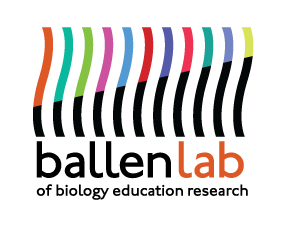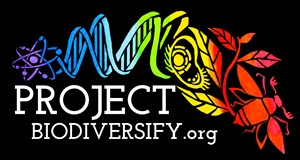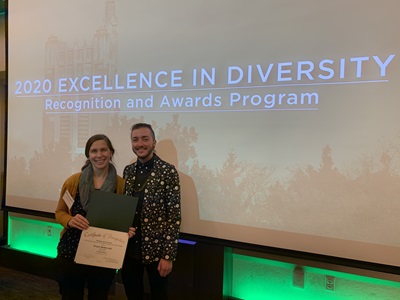“While demographics in the United States continue to diversify, we demonstrate the mismatch between aspiring scientists and the role models held up as exemplars in biology textbooks.”

In 2019, Proceedings B, in a new initiative launched the biological science practices (BSP) article type appointing Dr Stephanie Meirmans, University of Amsterdam to handle these submissions. These articles are aimed at addressing scientific practices within biology that influence research quality, scientific community health and the public understanding of science. The journal recently published its second BSP article – a study that evaluated the diversity of scientists featured in biology textbooks. The authors of the paper told us more about their interesting findings and a bit more about themselves.
Textbooks are one of the primary resources that undergraduate students use to learn science. They shape students’ impressions of who scientists are, have been, and can be and exposing them to scientists from diverse backgrounds has positive impacts on their interest and achievement in STEM [1–3]. In this study, we quantified the demographic representation (binary gender and race) of biologists in common contemporary undergraduate biology textbooks in the United States, asking how representation has changed over the past 100 years. When considering representation of scientists over time, we found women and scientists of colour were increasingly represented in textbook examples of contemporary, compared to historic, scientific discoveries. Further, we found that citations of women were proportional to the number of women biologists in the scientific workforce at the time of discovery. While this result was encouraging, the scientists represented across textbooks did not reflect the demographic makeup of textbooks’ target audience: the U.S. biology student population. Considering binary gender and race together revealed that women scientists of colour were woefully underrepresented (Asian & Hispanic women) or completely lacked representation (Black women) in textbooks. We also used our observed representation to project the predicted time frame before the representation of women and scientists of colour match the demographic identities of biology student populations. Results from our forecasts reveal a grim outlook for some underrepresented scientists: if rates of inclusion continue on their current trajectory, it will take nearly 500 years for biology textbooks to reflect the race of student populations currently in the classroom. While demographics in the United States continue to diversify, we demonstrate the mismatch between aspiring scientists and the role models held up as exemplars in biology textbooks. We advocate the use of resources such as Scientist Spotlight (e.g., [2]) and Project Biodiversify (www.projectbiodiversify.org) to diversify examples of scientists in introductory biology, so that students do not have to wait 500 years for their textbooks to reflect their classrooms.
More about the authors
Sara Wood is an undergraduate researcher in the Ballen Lab of Biology Education Research at Auburn University, studying biomedical sciences. Her research interests include identifying disparities among underrepresented groups, specifically in the field of Biology. In addition to that she is also active in the Association for Women in Science (AWIS) organization on campus which is devoted to uplifting fellow undergraduate women in their career success.
Her research interests include identifying disparities among underrepresented groups, specifically in the field of Biology. In addition to that she is also active in the Association for Women in Science (AWIS) organization on campus which is devoted to uplifting fellow undergraduate women in their career success.
Jeremiah Henning is an assistant professor at the University of South Alabama in the Department of Biology, where his research is focused on understanding how biodiversity shapes ecosystem function, regardless if it’s microbes within a plant, plants within an ecosystem, or students within our classrooms. Prior to arriving at South Alabama, he conducted his post-doctoral research at the University of Minnesota investigating effects of nutrient addition in a globally-collaborative research cooperative – The Nutrient Network.
Luoying Chen recently obtained her B.S. in Business Administration with a Computer Science minor from Auburn University. Her research interests focus on examining how technology can affect people’s lives and integrating cutting-edge analytical approaches into various disciplines.
Taylor McKibben is an undergraduate researcher pursuing a B.S. in Microbial, Molecular, Cellular Biology from Auburn University. His research efforts focus on diversity and equity in biology education as well as the cellular, molecular, and genetic components of aging as shown in the novel model organism Anolis sagrei.
Michael L Smith is a Simons Foundation postdoctoral fellow at the Max Planck Institute of Animal Behavior and the Centre for the Advanced Study of Collective Behaviour at the University of Konstanz, Germany. His research uses automated tracking to understand lifetime behavioral variation in honey bee colonies, and how individual bees detect and respond to colony state.

Marjorie Weber is an assistant professor at Michigan State University in the Department of Plant Biology and the Ecology, Evolutionary Biology, and Behavior Program. Her research is focused on testing fundamental questions in ecology using plant-insect interactions. Marjorie is also a co-founder and co-director of Project Biodiversify (www.projectbiodiversify.org), a group dedicated to increasing the inclusivity of biology classrooms.
Ash Zemenick is a postdoctoral scholar at Michigan State University in the Department of Plant Biology. Ash is the director and co-founder of Project Biodiversify (www.projectbiodiversify.org), a group dedicated to increasing diversity, equity, and inclusivity of biology classrooms.
Cissy Ballen is an assistant professor and discipline-based education researcher who studies biology education. Her research centers on identifying scalable equitable strategies in higher education that improve learning for all.

Marjorie Weber and Ash Zemenick accepting a 2020 Excellence in Diversity Award (EIDA) in the category “Teams-Emerging Progress” from Michigan State University’s Office of Inclusion and Intercultural Initiatives.
What was your experience of publishing with Proceedings B and why did you choose the journal?
It was a great experience and the reviewer comments were incredibly helpful. Because all of the authors are biologists by training, we were already quite familiar with Proceedings B, and one of the authors suggested the journal because they had enjoyed the other BSP article that was published.
Proceedings B is looking to publish more biological science practices articles. More information about the article requirements and the submission process can be found on our website.
Image credits
1. Ballen lab logo (credit: Mike Costello).
2. Biodiversify logo (credit: Allison Simler-Williamson, PhD).
3. Marjorie Weber and Ash Zemenick accepting a 2020 Excellence in Diversity Award (EIDA) in the category “Teams-Emerging Progress” from Michigan State University’s Office of Inclusion and Intercultural Initiatives. (credit: Mary Zemenick).
References
1. Yonas A, Sleeth M, Cotner S. In a “Scientist Spotlight” Intervention, Diverse Student Identities Matter. J Microbiol Biol Educ. 2020;21.
2. Schinske JN, Perkins H, Snyder A, Wyer M. Scientist spotlight homework assignments shift students’ stereotypes of scientists and enhance science identity in a diverse introductory science class. CBE—Life Sci Educ. 2016;15: ar47.
3. Fairlie, R. W., Hoffmann, F., & Oreopoulos, P. (2014). A community college instructor like me: Race and ethnicity interactions in the classroom. American Economic Review, 104(8), 2567-91.





